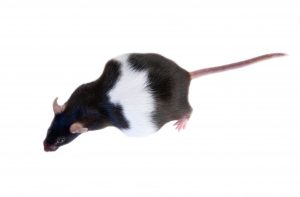

Pandemic Blog Series Part III: Taking Care of Yourself during Quarantine
In the midst of the COVID-19 pandemic, lab technicians, veterinarians and other animal care staff are considered essential workers as they are caring for the health and welfare of their research institution’s animals. The honorable dedication of animal care professionals during the operating conditions of the pandemic is challenged with many experiencing negative emotions of uncertainty, sadness, and anxiety.
To say stress and apprehension are high these days is an understatement. The lab essential workers are faced with high pressure and traumatic situations, experiencing cancellation of research studies, decreased staff, and most of all, euthanasia of large numbers of mostly healthy animals. But, still, animal care professionals continue to show up for their jobs every day in these challenging and tense times. Many may also be feeling a sense of helplessness, guilt and loneliness while working from home, as colleagues are struggling working short-handed on site. Some animal care takers are faced with the gut wrenching directive of mass euthanasia. A combination of physical, emotional and psychological depletion can arise from these unprecedented work and living conditions.
“The expectation that we can be immersed in suffering and loss daily and not be touched by it is as unrealistic as expecting to be able to walk through water without getting wet. This sort of denial is no small matter.”
– writes Rachel Remen, MD, in her book “Kitchen Table Wisdom: Stories that heals”
Rachel Naomi Remen is a physician, author, teacher and educator. Dr. Remen is a clinical professor at the University of California, San Francisco, and the founder and director of The Institute for the Study of Health and Illness (RISHI) that offers multiple courses for health professionals. Her quote eloquently illustrates the inevitability of compassion fatigue, especially for those in the helping profession.
Compassion fatigue
Compassion fatigue, a combination of secondary traumatic stresses, is not a new term, but we have heard it quite a bit lately, and for good reason. The concept of Compassion Fatigue has been around since 1992, when Joinson published his article Coping with Compassion Fatigue to help nurses who were worn down by daily hospital emergencies.
“Compassion Fatigue is a state experienced by those helping people or animals in distress, an extreme state of tension and preoccupation with the suffering of those being helped to the degree that it can create a secondary traumatic stress for the helper”.
– defines Charles R. Figley, Professor at Tulane University and author of Compassion Fatigue and Treating Compassion Fatigue
Symptoms are displays of stress resulting from the care giving work health and animal care professionals perform on a regular basis and are well described on the Compassion Fatigue Awareness Project website. These symptoms include physical and mental fatigue, feeling burdened and helpless, isolation, and overreaction, etc.
Many institutes recognize compassion fatigue as an occupational hazard, and offer support programs such as Dare2Care at University of Washington, Self-care resources at Tulane University, or the standard Employee Assistance Program. But taking care of yourself is also a personal and individual responsibility. Julie Squires, a certified compassion fatigue specialist and life coach, has been offering webinars through MSMR, NEBAALAS and other lab animal groups, where she presents strategies on how to manage your mind, practice self-care and process emotions.
-
Mind management
Our brain has a natural negative bias: it is built with a greater sensitivity to unpleasant news and reacts more strongly to stimuli it deems negative. This is a result of evolution, as our very survival has depended on our skill at dodging danger. It takes frequent small positive experiences to tip the scales toward happiness. We are currently being thrown in a constant state of panic, and need to redirect our brain to more positive emotions, as we work against our default mode of negative bias. Emotions and feelings are created by thoughts, not by circumstances. We can control our interpretations of the facts in our mind by directing our thoughts. We can rewire our brains to think with more positivity, even in very difficult times. For example, show acceptance for the things you cannot control, and gratitude for the animals who are dying to keep us, humans, safe.
“The greatest weapon against stress is our ability to choose one thought over another”
– William James, American philosopher and psychologist
-
Self care
Self care is misunderstood. We are not machines, we are humans who feel. We need time to regroup, reboot, rejuvenate. People need a place to go and be open/ ask for personal support. Self-care means engaging regularly in activities, intentions and practices that reduce stress levels and enhance our wellbeing on 5 different aspects: mental, physical, spiritual, emotional and social.
- Channel your energy towards a creative endeavor : Studies have shown that participating in music (playing an instrument, singing, dancing) and art (painting, drawing…) can alleviate pain, help manage stress, promote wellness and much more.
- Reconnect with nature : Increased urbanization is associated with increased levels of mental illness, particularly anxiety and depression. Ecotherapy, also known as nature therapy (walk outside, do some gardening, listen to a river running and birds singing), is based on the idea that people are impacted by the natural environment. Studies have demonstrated the positive effects of nature on both physical and mental health, reducing anger, aggressiveness, and anxiety
- Nurture your body, mind and spirit: Sleep, exercise, water and nourishing food are essential components to our wellbeing. Stay connecting with others via technology, Journaling, meditation and yoga have been shown to reduce stress and anxiety, and many classes are offered online.
- Keep a structured routine, even if working from home: Get up and go to bed at regular times, set up a designated work area and work hours. Even though it can be tempting to stay in your pajamas all day, dressing up to “go to work” enhances productivity and promotes a professional attitude. Structuring meals and breaks also helps to create a work routine.
Resilience and our new normal
Animal based research is a necessary step to provide safe treatments to pain and chronic illnesses. Animal care providers are heroes in hiding, taking care of those animals who will help us overcome disease, even fatal ones. Dr. Cindy Buckmaster, AMP’s Chair, AMP Board of Directors, speaks wonderfully about animal research in her talk Stop Hiding and Change the World!
In these difficult times, more than ever, animal care providers are fighting for the health and welfare of their animals. The typical emergencies of power outages and floods have historically been dealt with mice being temporarily relocated and then waiting for the return to normalcy, usually after a relatively short period of time. In contrast, our current crisis is global and for an undetermined duration. Preparation is the antidote of fear. But how to prepare for such a crisis, how to face adversity? Resilience.
Traditionally, personal resilience has often been defined as how we bounce back from difficult situations. By modernizing the concept of resilience, we can define it as advancing despite adversity. Resilience is a goal oriented notion: we keep working towards our vision, our values. We stay focused on our purpose. Resilience is a proactive skill, we don’t wait for adversity to build it, we develop it in both small and large day to day challenges. Driven is a company that helps you build and maintain resiliency proactively over time to prevent stress, anxiety, depression… Pick yourself up, and know that it is ok to not be ok.
Can we go back to normal after all this? Or will we have a new normal? I would like to believe that we will be back to a better normal, with more support, care and kindness, with less siloed activities and more connected work. This pandemic can teach us to be more appreciative, more flexible, more positive, and most of all, to look out for others, our neighbors, colleagues, and stay all committed to do our best work.
Check out our blog series on Managing your Research Laboratory during a Pandemic:
Part I: How to Care for your Laboratory Staff and Facilities During a Pandemic
Part II: How to Care for Your Laboratory Mice during a Pandemic
Part III: How to take care of yourself during quarantine
Part IV: How to plan for rodent colony repopulation after a pandemic
PLEASE LET US KNOW HOW & WHAT YOUR LAB IS DOING IN THE COMMENTS BELOW!

